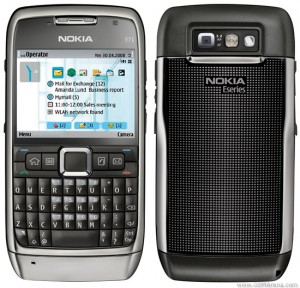Remember that up to this point (part 1: https://randythetechprofessor.com/the-cell-phone-scenario-demystified-part-1 and part 2: https://randythetechprofessor.com/the-cell-phone-scenario-demystified-part-2 we have discussed the following five cell phone points:
6) Cell Phone Technologies: CDMA
A) CDMA coverage is very strong in the U.S., Canada and Mexico. CDMA is particularly strong in rural areas.
B) Of the U.S. carriers, Verizon, Sprint, and U.S. Cellular use the CDMA technology.
C) Carriers that use the CDMA network do not use SIM card enabled phones.
E) Unlocked phones do not work on the CDMA network.
F) Since CDMA phones have no SIM card you do not have the capability of using a local number when visiting a foreign country.
G) CDMA is a more complex proprietary standard (designed by U.S. Qualcomm) and requieres more cell phone battery output.
H) If you will be making calls only in the U.S. (North America) then CDMA is a good option. Some CDMA phones support GSM for international use.
This is my humble opinion:
1) Choose the best carrier over a particular phone. You don’t know how many times I’ve heard Apple iPhone users complain about having AT&T as their carrier! What good is it to have the greatest phone in the world if you can’t fully enjoy it because of a sub par carrier?
2) Get an unlocked GSM phone. Because they are more popular globally, you’ll have more freedom of choice and you can buy one that is not offered by any U.S. carrier. They cost more than carrier susidized phones but the cost is less and less every day. If your GSM carrier raises it’s rates or changes it’s coverage you can simply switch carriers without having to buy a new cell phone.
3) When you go with a carrier subsidized (“free” or “heavily-discounted”) phone you obviously will have to sign a two year service contract. In order to make up for the low cost of the phone your carrier will charge more expensive phone rates (both domestically and overseas roaming). Eventually you will end up paying much more for your “free” phone and service than you would have had you originally bought an unlocked phone.
4) Check out the unlocked GSM Nokia phones (The E71 is an great older model therefore cheaper). Nokia sells more phones in a couple of days than Apple sells in a quarter, but Nokia isn’t as well known in the U.S. I also really like th RIM BlackBerry Bold 9000 (unlocked of course).
Professor Randy says: Voila!! The cell phone mystery no more! You are now ready and able to make an intelligent cell phone choice. Enjoy your new phone!!



